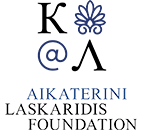Plans and drawings (1040 Subjects)
Temple of Apollo in Didyma: Fig.I: The Front of the Ionic Capital of a Pilaster, with the upper part of the Shaft. Fig. II: The Profile of the same Capital. Fig. III: A Section through the Front of the Capital. Fig. IV: Another Compartment in the Front of one of these Capitals.
Temple of Apollo in Didyma: Fig.I: The Front of the Ionic Capital of a Pilaster, with the upper part of the Shaft. Fig. II: The Profile of the same Capital. Fig. III: A Section through the Front of the Capital. Fig. IV: Another Compartment in the Front of one of these Capitals. (shaded drawing).
Plan of ancient theatre in Riniasa.
Plan of the Upper Gallery of Hagia Sophia. Illustration of the stages of Muslim prayer. Byzantine coins.
Reconstruction of architectural features based on marble fragments.
View and plan of the fortress of Aigosthena (Porto Germeno).
Corinthian capital from Actia Nicopolis.
Plan of the Parthenon.
Section of the Pyramid of Cheops.
Section of Pyramid in Saqqara.
Plan of space of worship in the catacombs of Alexandria.
Map of Istanbul and the Bosphorus strait. Plan of Hagia Sophia.
Plan of the Gate of Athena Archegetis.
Elevation of the façade and side of the Gate of Athena Archegetis in Athens.
Drawings of the architrave and column capital of the Gate of Athena Archegetis. Bottom plan of the entablature.
Gate of Athena Archegetis: 1. Capital of the antae, with a section of the entablature. 2. Section of the capital of the antae. 3. Section of the cornice.
Plan of the Temple of Artemis Agrotera on the southern bank of Ilissus river.
The Temple of Artemis Agrotera at Ilissus river.
Elevation of the front of the Temple of Artemis Agrotera at Ilissus river.
1. Elevation of the southern side of the Temple of Artemis Agrotera on Ilissus river. 2. Longitudinal section of the temple.
1. Base and capital of the columns, entablature of the Temple of Artemis Agrotera at Ilissus river. At the time of Stuart and Revett's investigation, the frieze of the temple had already been destroyed and the relief depicted is a fragment of a relief discovered elsewhere in Athens, whose dimensions fit those of the missing part. 2. Elevation of quarter of a column. 3. Drawing of the flutings of the column.
Plan, profile and section of angular capital belonging to the Temple of Artemis Agrotera.
Temple of Artemis Agrotera: Capital and base of one of the antae, with the different architraves which were employed in the building. Fig. 1. The architrave within the portico. Fig. 2. The architrave to the pronaos. Fig. 3. Cymatium on the upper fascia of the architrave of the pronaos. Fig. 4. The architrave to the opisthodomos.
Plan of the Horologion of Andronikos Kyrristos (Tower of the Winds).
Elevation and section of the Horologion of Andronikos Kyrristos (Tower of the Winds).
Fig. 1. The external mouldings of the Tower of the Winds. Fig. 2. A section of the uppermost of the three steps which form the basis or stereobata on which the building stands.Fig.3. A quarter of the roof of the Tower of the Winds. Fig. 4. A section of half the aforesaid roof. Fig. 5. The fragment of a capital marked B in the preceeding figure, and which in Plate III of this chapter is, with some restorations made to support the conical Marble and the Triton.
Horologion of Andronikos Kyrristos (Tower of the Winds), Athens:
Fig 1. The capital and entablature of the portico before the door. Fig. 2. A fragment of the Dentells belonging to the cornice of the entablature. Fig. 3. The profile of the cornice belonging to the circular projection under the figure of ΝΟΤΟΣ.
Horologion of Andronikos Kyrristos (Tower of the Winds) in Athens: The capital of one of the antae, with traces of the entablature and the entrance frame. (Drawing based on a small remaining fragment of the capital).
The internal mouldings of the Tower of the Winds: Fig. 1. The lower cornice. Fig. 2. The second cornice, enriched with dentels and modilions. Fig. 3. The soffit of the second cornice. Fig. 4. The circular fascia with the inferior part of one of the columns which it supports, likewise the capital and the entablature of those columns. Fig. 5. Explains the manner in which the cabled part of the flutings on those columns are terminated.
Three of the eight dials on the Tower of the Winds. Under the word ΝΟΤΟΣ is that on the south side; under ΕΥΡΟΣ is that on the south-east side; and under ΑΠΗΛΙΩΤΗΣ, that on the east side of the Tower.































